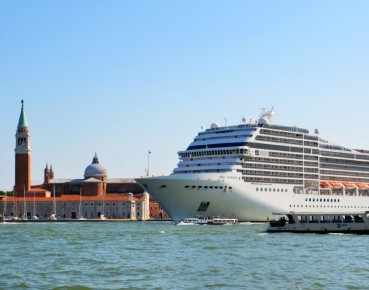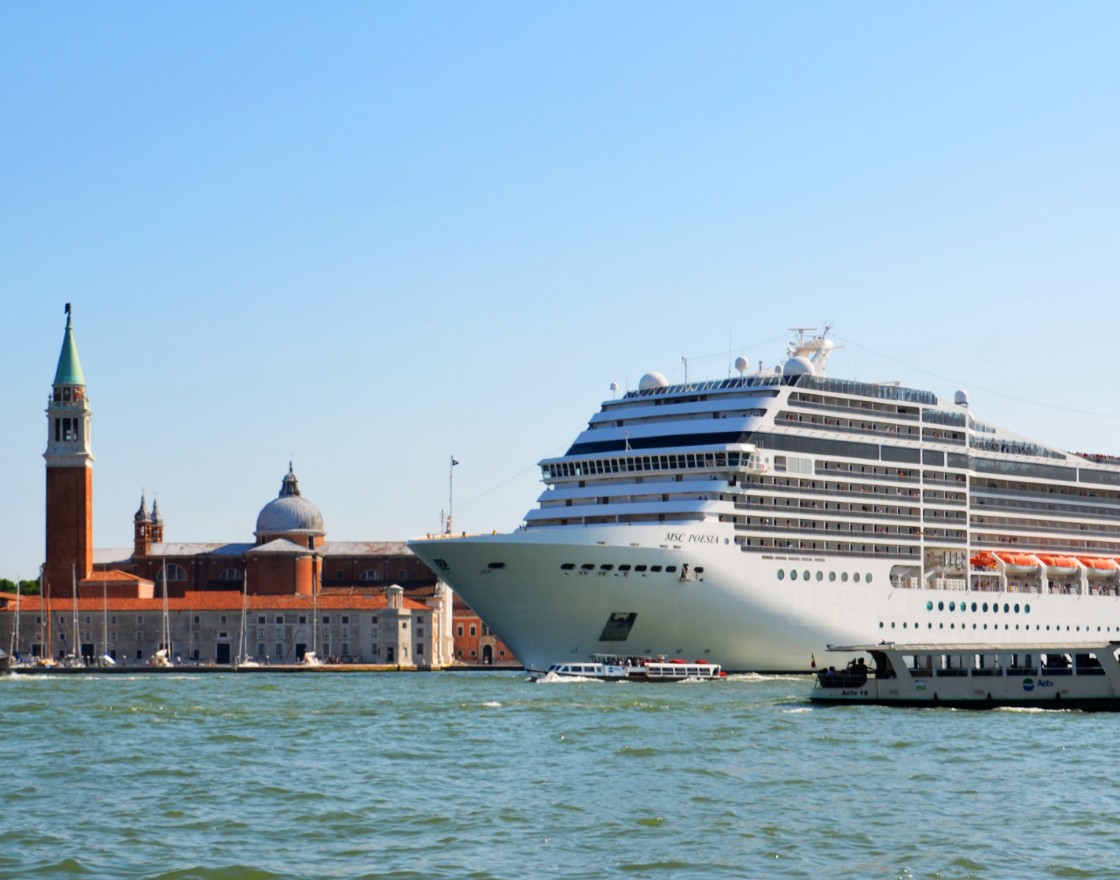Tydzień w gospodarce
Category: Trendy gospodarcze

Venice, Italy (Pixabay/Sarah Lötscher, Public domain)
The tourism sector has either died or is in the process of dying practically worldwide. People are afraid, they follow the recommendations of their governments and stay at home. A dangerous coronavirus has emerged in Europe outside the high season. The ski stations are empty, but this is generally a better-quality, high-margin business. There will be no wave of bankruptcies in the mountains because highlanders, whether in the Alps or the Tatra mountains, have money, but problems with liquidity will appear, i.e. lack of cash for payments, for example for electricity bills or loan repayments.
Olga Jonas, from Harvard, studied the relatively recent mild outbreak of MERS in South Korea in 2015. Only 186 cases were reported at the time but the economy suffered as much as the USD8.2bn in losses, i.e. the economic cost of one case of disease may have amounted to the USD44m. That is a lot, but on the other hand, certainly, the cost increases with the degree of economic and civilization development, since in the richest countries, and Korea is one of them, costs and prices are higher and above all human life is more valuable.
The results of a study by researchers from the Australian National University (Warwick McKibbin and Alexandra Sidorenko) published in 2006 on the global macroeconomic consequences of the influenza pandemic are widely quoted. Based on a historical analysis including, among others, the deadly “Spanish flu” and SARS, they estimated that in the mild scenario, a global flu wave could reduce global GDP by 0.8 per cent, i.e. GDP worth about the USD330bn at that time. In the ultra-unfavorable scenario, the damage would amount to as much as the USD4.4 trillion, i.e. more than 10 per cent of the world’s GDP.
The estimates of the potential scale of losses obtained in 2005 by the US Congressional Budget Office (CBO) are quite similar. Depending on the severity of the pandemic and its mortality, the US economy would lose from 1.5 per cent to 5 per cent of GDP.
A few weeks ago, in early March 2020, Professor Warwick McKibbin presented, this time jointly with his PhD student Roshen Fernando, his latest estimates in a paper on the potential global macroeconomic impact of COVID-19 in seven scenarios. The benchmark could be global GDP, which in 2019 was probably worth about the USD86 trillion. In the mildest-case scenario of the pandemic, the global GDP loss for 2020 could amount to approximately the USD280bn (including the USD95bn in China and the USD21bn in Indonesia). In the catastrophic variant, similar to that of the “Spanish flu” a hundred years ago, it could be almost the USD9.2 trillion, i.e. again over 10 per cent of last year’s GDP.
There is much to suggest that the world will rather not experience a disaster; the question is, will it learn its lesson? The Australian researchers stress the importance of the costs that could be saved to the world if more and better investment were made in public health systems, especially in less developed countries, where the number and density of people is increasing and health care is deteriorating.
Tourism have a huge problems and if the disease does not retreat quickly, both big tour-operators and smaller tourist offices will face huge problems. In this business, bankruptcies are frequent and no global pandemic is needed. Even a distinguished name and almost two centuries of tradition do not protect. After all, the legendary Thomas Cook recently declared bankruptcy. Over the last decades, its advertising slogan was: “Don’t Just Book it, Thomas Cook it!” However, now you have to book again, “Thomas cooking” is over.
Travel agencies operate in conditions of very fierce competition and arrogant expectations from a mass of travelers. In Egypt or Thailand people want to have a lot, cheap and fast, but they want to pay the natives with a copper. The result is high turnover and low margins, even lower profits and negative cash flows for months.
For companies representing the tourism industry, as well as for aviation (read more) and bus carriers, the continued presence of COVID-19 infections in late spring this year means bankruptcy or its very real perspective. The International Air Transport Association (IATA) believes, for example, that the negative impact of COVID-19 on this industry will amount to the USD250bn this year; however, today even last year’s nuts are not worth betting on this forecast.
For hoteliers, owners of guest houses, houses and apartments for rent, the beginning of the year is the worst time in Europe. In January, the number of overnight stays registered in the European Union is about 80 million and it only begins to increase in mid-March, first to 100 million per month, to reach about 250 million in July and to peak at about 300 million in August. Eurostat reports that in 2018, 1.66 billion overnight stays were provided in 28 EU countries, over 300 million more than in 2009. The impact of the pandemic on European tourism will therefore be stronger than it would have been 10 years ago.
The surprising information is that the largest turnover in the hotel business in the broad sense of the term is recorded in Germany, where more than 330 million overnight stays were provided in 2018. In this particular case, business trips of the German citizens across their own country play an important role, accompanied by a high purchasing power, which does not force the Germans to save during their trips. Obviously, France (about 300 million overnight stays in 2018), Italy – 212 million, the UK – about 200 million and Spain – almost 170 million, are at the top of Europe’s tourist destinations.
All these countries are the world leaders in terms of wealth and economic governance. Their tourism sectors may even suffer great losses, but they will rise or be resurrected. This is also because they are a part of their national identity and culture. Besides, after the wave of horror has fallen, which will happen sooner or later, tourists from America and rich regions of Asia will not allow them to collapse.
Until 30 years ago, Poland was not visible on any foreign map of tourism. Despite the lack of attractions similar to those in Rome or Paris, today Cracow, Warsaw and Gdansk have become at least a curiosity for millions of foreigners. A large number of them come to Poland in search of rather unrefined evening entertainment, but when you don’t have what you like, you like what you have.
In 2018, 71 million overnight stays were registered in Poland. Statistics Poland (GUS) reports that in 2018, foreigners spent the USD12bn in Poland. Since most of them were visitors from neighboring countries it is difficult to call them tourists.
Indeed, foreigners spent the USD9.6bn on purchases of goods (including fuel), i.e. 80 per cent of the total amount. Therefore, they spent only the USD2.5bn on services, mainly accommodation and meals. A statistical foreigner spent the USD140 during one stay in Poland, including the USD28.6 on services which may be related to tourist purposes.
The picture changes with the place of the border crossing. Those arriving to Poland by plane, ferry or cruise ship are usually not looking for the nearest grocery store. Average expenses of a foreigner staying in Poland for more than one day in 2018 amounted to the USD291.3 and were three times higher than the expenses of a person not using overnight accommodation.
For the Polish economy as such, tourism is not very important, but it is very important for hundreds of larger companies and thousands of small businesses, especially if its largest part is taken into account, i.e. leisure and travel of Poles across country. Whereas in 2018, foreigners spent less than the USD2.5bn on accommodation and meals in Poland, Poles spent three times as much, namely, the USD7.5bn on the same purpose.
The impact of the pandemic on tourism will obviously be experienced, however, in the macroeconomic dimension its scale will be insignificant. Another issue is probably the huge problems of tens of thousands of people running mini-tourism businesses and people who work without permanent jobs. They have nothing to do anymore or will not find a job in the spring and summer. Most of them will not be able to manage on their own, so they need state support. Let’s hope they have not miscalculated.
If the pandemic does not retreat after a few months and if the damage of the coronavirus pandemic leaves very strong traces in people, discouraging from any travel for a long time, the negative effects on global tourism will be overshadowed by more than serious global economic consequences. Such a scenario is possible, but it’s better not to give fate ideas.
There is no good method of estimating the economic effects of rare phenomena, especially since their nature and extent are always different, and secondary reactions are unpredictable beforehand. Who would have thought, for example, that after an underwater tremor, a tsunami and a huge disaster on the Japanese coast, Germany would decide to close all its nuclear power plants?
A monetary measure of international tourism is the so-called tourist export, i.e. the sum of expenses incurred on the spot by tourists plus revenues from transport. The measure is obviously very approximate.
It is much worse in the case of estimating the size of domestic tourism of citizens since in this case there are no convenient and reliable traffic registration points, such as airports, land border crossings or exchange offices, while the tourist traffic is also formed by several-hour-long excursions “out of town”.
According to the UN World Tourism Organization (UNWTO), the global value of tourism exports has reached the USD1.7 trillion, including the expenditure of tourists on the spot, mainly on accommodation and meals – the USD1.45 trillion. The economic importance of tourism for the world is enormous, especially since the above estimates refers only to registered foreign tourism. If, for example, the traffic within the Schengen area, which is hard to capture, but above all domestic tourism is added, the value would probably double and almost certainly rise to the USD3 trillion.
The UNWTO reports that on the list of the most important branches of the global economy, tourism follows the chemical and fuel industries, but overtakes the automotive industry and even food processing.
Tourist traffic has been more and more intensive (at least until now). In 2005, 809 million “international tourist arrivals” were registered worldwide and in 2018 – about 1.4 billion. A comparison of the relevant figures would show that a statistical traveler/visitor has recently spent well over the USD1,000 “on living” and about the USD180 on the ticket during one trip.
Although some assessments of the potential business impact of the pandemic on tourism and the economy in general will already appear, it seems that it is far too early for forecasts. There are two main factors we do not know.
We are not aware how long the current pandemic will last and how quickly it will fall into collective oblivion. Though, it is clear that the longer it lasts, the worse the effects and they will multiply at a faster than arithmetic rate.
However, the forecasting uncertainty disappears in the scenario of evanescence of the disease, e.g. in a few weeks’ time. Indeed, it is unknown how long people’s trauma of travelling will persist. There are therefore indications that in the medium term the problems of the tourism industry may be deeper than the negative global economic impact.
People with grey hair always used to repeat, and I will keep repeating it, that once, when they were young, the world was better. Generally, that’s a load of rubbish, but there’s a little bit of truth.
Tourism has taken on a huge scale in recent decades. According to the UNWTO, in 1950 there were only 25 million so-called international tourist arrivals worldwide. Since that year, the world’s population has increased three times, and tourist traffic combined with crossing borders has increased almost 60 times.
A couple of years ago, a terrifying photo of a crowd waiting in line to climb the top of Mount Everest became famous around the world. Weekend trips to another city in Europe have become a kind of sport, especially for young people. Not for some purpose, but mainly for a photo on Instagram, because pizza and beer are more or less the same everywhere. The inhabitants of many cities, not only Barcelona, Venice or Paris, but also of Cracow have had enough. If the current pandemic could stop this lemming-like rush, it would be a small advantage, obviously gained at an expense which is not desirable.

